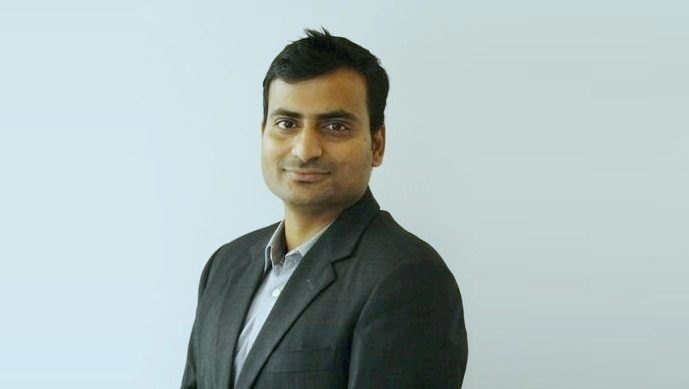While having the right talent onboard is important, what is even more important is knowing how you can nurture it and ensure maximum value from it. Thus, organisations today need to go deeper and wider in their talent management game and have a personalised solution for every single individual and team in their organisation.
The future of Performance Management is no longer one long, nail-biting meeting a year, but a continuous, holistic process which facilitates transparency and dialogue. It helps course-correct on time, avoid misalignments and gaps in expectations, saves time and bandwidth, gives direction, and ensures collective success. So it is true, objective and real-time with technology, and is always justified with data, making it non-threatening and fair for everyone.
Here are some examples of new-age tech features that are being adopted by leading industries and brands to ace their talent game.
CONTINUOUS FEEDBACK
Continuous Feedback is the future of performance reviews – a more prompt approach to arrest attrition, improve performance and spike engagement. Today, it is obsolete to wait until prescribed timelines for performance appraisals to take place, because the results obtained from annual reviews are often biased and don’t accurately reflect employee contributions over a course of time. Continuous Feedback, however, fosters constant, healthy dialogue between managers, reportees, peers, and teams about specific tasks.
How India’s leading e-commerce player succeeded with Continuous Feedback
The leading e-commerce player in India is a young and dynamic organisation, with a millennial DNA and self-starter mindset. Being a brand sitting at the cusp of Technology and Fashion, its vision was to make life as simple as possible for all its employees, allowing them to speak a common language and be able to collaborate with a diverse set of talent. And here’s where Continuous Feedback played a huge part; because it gave 12000+ employees the power to share and receive feedback, keep communication channels open at all times, and work on prompt course corrections.
This was because the user-centric design, intuitiveness, and simplicity of use of Darwinbox helped employees from various geographical, cultural and educational backgrounds to seamlessly understand the functionalities and take to the product.
GOAL CASCADING
Cascading of goals is a practice followed by organisations to align individual goals with the overall mission at a company level. Through this process, it is ensured that from the very beginning of the process, strategic, measurable and meaningful actions are taken at an employee level for the fulfillment of the overall organisational goal. This not only sets a clear vision and purpose for the employee, but it also boosts their morale and converges their efforts with the org.
How one of India’s pioneering Pharma enterprises aligned with the CEO scorecard
One of the leading pharma companies in the country that is well known for being the bellwether of technology adoption revolutionised their performance management process with Darwinbox.
In order to achieve the ultimate alignment of personal goals to org goals, a concept mirroring the balanced scorecard approach was devised. The idea was to elevate accountability towards the near term and strategic future goals. The vision was broken down into goals which were mapped to corresponding scorecard pillars. Being a critical initiative, the adoption of this new approach started with the CEO; whose goals were set up to define the organisation’s scorecard. With the flexibility on Darwinbox that enables HR to define Organisation level, Department level or Individual Role level goals, the HR team of the org was able to create a framework for goal cascading right at the beginning of the performance cycle, and 250 members of the leadership team aligned their goals to the CEO using Darwinbox.
MULTI-STAKEHOLDER FEEDBACK
When feedback about a particular person is sourced from multiple stakeholders at different levels of the organisational hierarchy, it is called Multi-Stakeholder Feedback. Also commonly known as 360° Feedback, here, feedback comes from these 4 sources in Multi-Stakeholder Feedback: Direct Reportees, Managers, Peers, and Customers. Not only does this promote a culture of constructive input, it fosters a holistic view and leads to the targeted individual development plans.
How India’s largest e-commerce enabler assessed a dynamic and cross-functional workforce
Being a 23,000 employees strong logistics firm that is new-age and highly tech-driven, its tech team is one of the most crucial contributors in the whole picture. Therefore, they often end up working across multiple projects and teams. So to be able to analyze and evaluate their performance in a complete manner, it was imperative that feedback from all these sources be taken into consideration.
Today, as a part of the MSF exercise, competencies of these employees are evaluated through feedback from stakeholders at different levels in the organisational hierarchy.
PERFORMANCE ASSESSMENT FRAMEWORKS
A performance assessment framework is a collective definition of the evaluation criteria, frequency of evaluation, and stakeholders involved in managing the performance of an individual. Multiple Assessments Frameworks on Darwinbox enable organisations to define these attributes of evaluation uniquely for employees from different bands, grades, departments, and roles.
How India’s top e-wallet player engages 7,000 employees in a unique and personalised performance framework
With a dynamic role changes, high levels of transfers and touch-points it was critical for this org to adopt a unique performance approach for different levels in the organisation. Using Multiple Assessment Frameworks on Darwinbox, they adopted a competency-based continuous performance management model for the leadership team while the rest of the organisation followed a biannual performance check-in model involving evaluation based on goals as well as competencies.
This solved for scale, designations, and movements across regions, and allowed everybody the freedom from being tied down to the same type of review and assessment.
THE FUTURE:
Talent decisions and development backed by analytical insight & AI-powered foresight. While the aforesaid new-age tools play a critical role in engaging talent in meaningful performance conversations, the ultimate gold mine of talent technology is 360 analytics. Organisations are increasingly focusing on getting analytical insights that can help them gauge real potential and also prescribe the talent trajectory that will be best for an individual’s career or for an ideal succession plan. A critical addition to talent technology is also a 360-degree talent view that will combine insights from across the employees’ lifecyle and give the leadership a view into their growth, skills, compensation, desired career track, and even any predicted attrition risk. This is the ultimate guide that will power talent decisions and help organisations make the most of it.
In essence, Continuity, Objectivity, Transparency – are the trickiest parts of building a high-performing organisation. Removing biases and surprises, aligning expectations and roles and fostering a nurturing environment are key to a successful performance management program. Thus, HR needs technology to become agile in its transition from hierarchical to distributed, impersonal to personalised, annual to continuous – to help talent perform to their maximum potential and accomplish desired career milestones.









